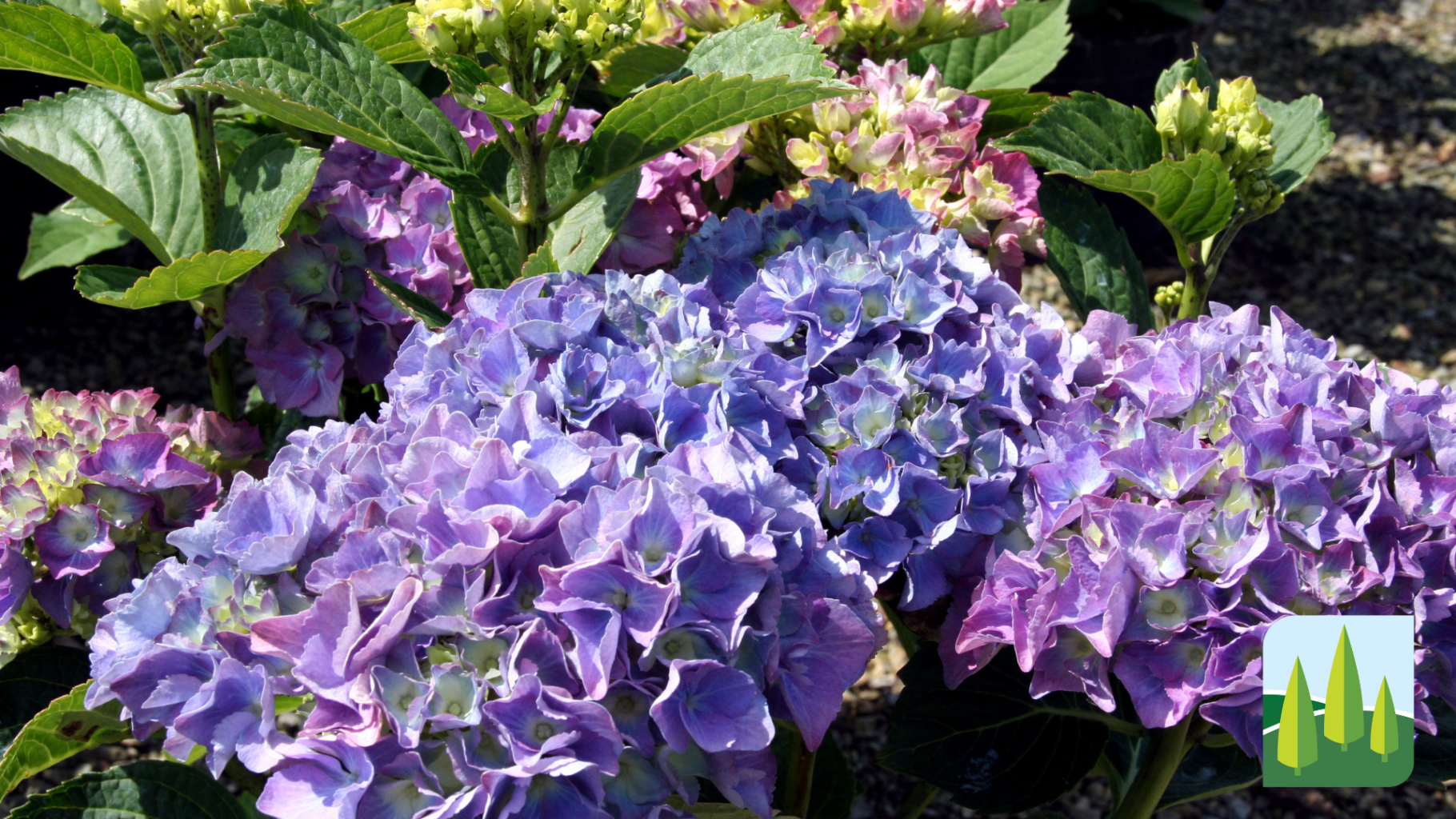
There is more to Hydrangeas than just the familiar blue and pink mopheads. There are over 70 species. Most are shrubs and small trees which originate in eastern Asia. They range includes evergreens, but these are seldom seen in Europe’s temperate climate, here the deciduous ones are most popular.
The name Hydrangea comes from the Greek for water vessel, which is due to the shape of the seed pods. Their common name, Hortensia, was made to recognise the work of French mathematician and astronomer Nicole-Reine Hortense.
Although Hydrangea can be climbers, shrubs, small, trees and half standards, the shrub is the most common form. The most popular being the maculate. These can be mop head or lace-cap. A mop head is a plant where the flowers form a dense dome of brightly coloured flowers, mainly consisting of the sepals. The Lace-cap is much more delicate with a circle of sepals surrounding smaller flowers in many ways resembling a viburnum flower.

The next popular type of hydrangeas is the paniculate. The flowers form showy cones and are mostly cream with a tint of pink or pale green fading to white. These plants can get quite large, up to 2.5m tall. They are an easy to maintain plant; water well and prune in the spring after the frosts to produce large flowers in the summer. Unlike the maculate they prefer to be in a sunny position so long as the soil is kept moist.
Other types of Hydrangeas include petoilaris which is a climber and produces ariel roots to cling on to surfaces, Quercifolia which has leaf similar to an oak tree and attractive cinnamon stick like bark.

One of the things Hydrangea are renowned for is their tendency to change flower colour. A white hydrangea will always be white; however, a pink can change to blue and vice versa depending on soil pH. An alkaline soil will produce pink flower and an acidic soil blue. If you don’t want your plant to change colour, check the soil type before you buy or you may need to be adding chemicals to it to maintain the flower colour.
Did you know, the roots of hydrangea are used in herbal medicine to treat bladder infections and gall stones. There is no scientific proof to back this up and if anything, you should avoid ingesting the plant as it contains cyanide.
Posted 4th Jul 3:38pm